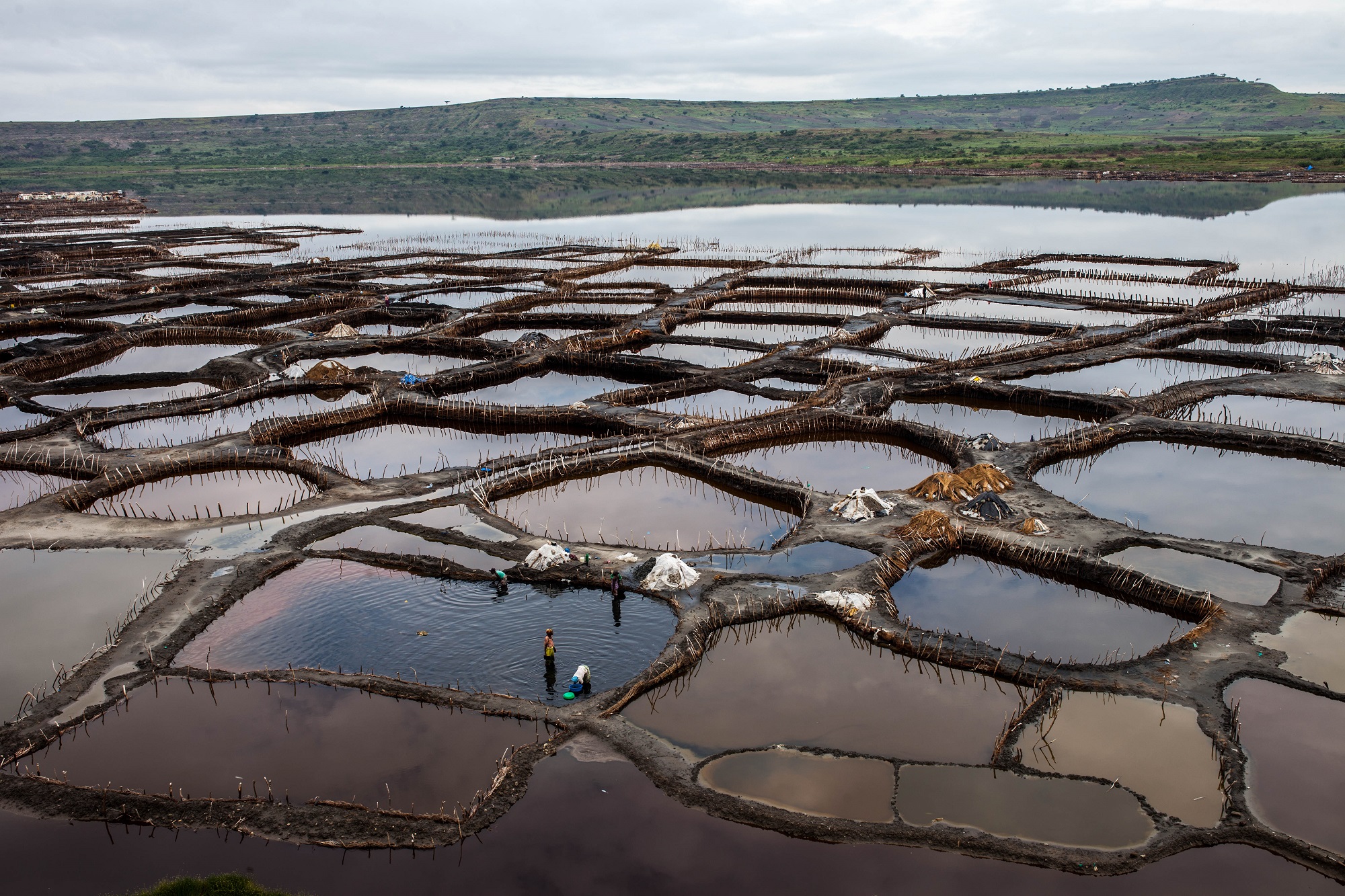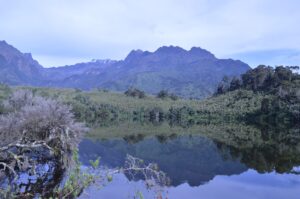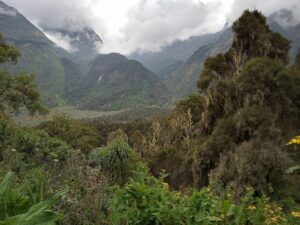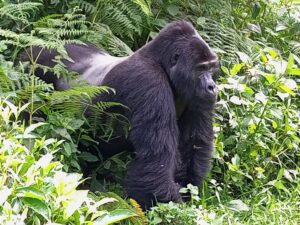Katwe Community Tourism Information Center (KATIC) is offering a lifetime experience through an authentic salt mining experience tour. The tour is offered any time through the day to both individuals and groups at an affordable price. Visitors staying at any lodge around Queen Elizabeth National Park can have access to this tour without a problem, either directly or through the arrangement of their lodge.
Traditional salt mining is one of the traditional industries that has survived to the 21st century. It is a showcase of the arts of a people that has exceeded the modern technology in salt mining and processing. This lake livelihood activity is an inspiration that has the potential to change everyone’s attitude about life. It is a showcase of a pair of muddy hands that manufacture a scientific genuine product of the modern time that is treasured across the world giving life to millions.
Lake Katwe is an explosion crater located in Katwe cell, one of the communities located inside Queen Elizabeth national park. It is a shallow lake with her deepest point at 6 feet. A visit to the lake gives guests an added advantage of viewing wildlife in their natural habitat within the neighborhoods of this lake, yet without paying park entry fees.
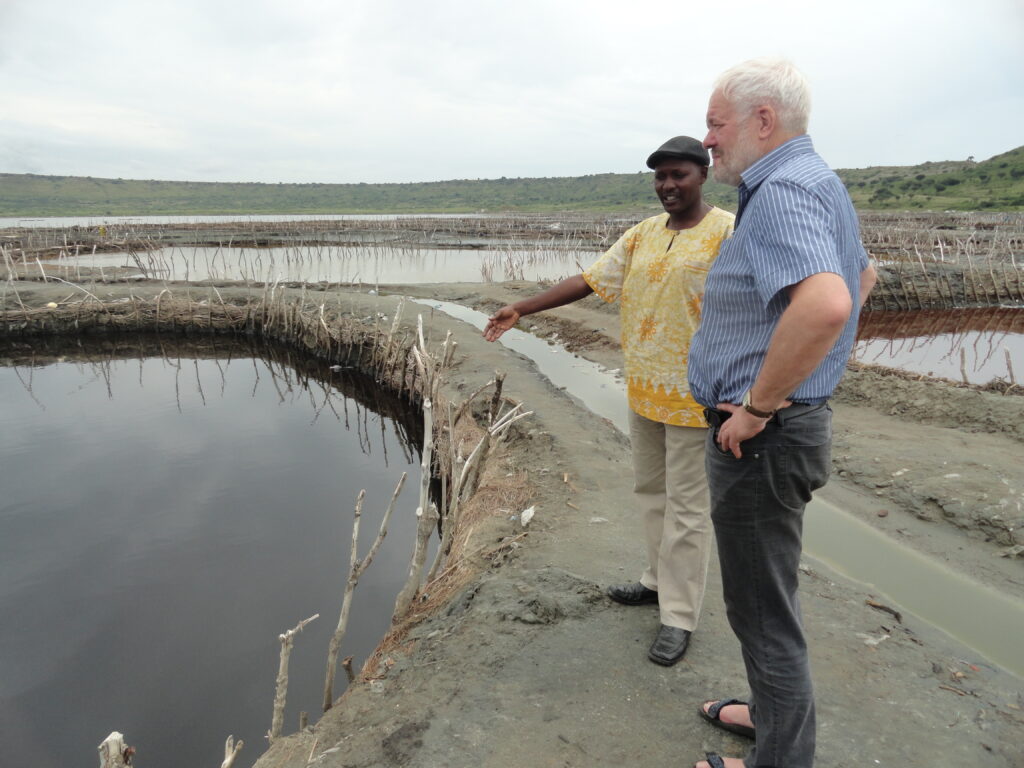
This tour gives the visitors an opportunity to take the adventure off the beaten track that comes with an opportunity to explore one of the oldest traditional industries on the planet. The connection of Lake Katwe salt trade to the explorers and the kingdoms across Africa makes it even more fascinating for those interested in the history of African kingdoms, economics, and exploration.
Unbelievably, Katwe Traditional salt mining has been done theis same way since the 16th century. Henry M. Stanley wrote a report on salt Exploitation at Lake Katwe in 1875. Salt mining is a trade that is dependent on the intensity of the sun. The salt lake is most productive during the hot season. Its peak harvest is in January to March and July to September being the hottest months in the Ugandan climate.
The rocks and mud collected from the base of the lake is turned into different forms of salt by the localized traditional yet scientific processes that will be explained to you during the two hours tour. The black-looking waters in this lake are too salty to support any life or will even destroy the hardest metals of modern times.
In the 1970s, Thysen, a German investment tried to introduce a salt processing factory but the metals pipes intended to transport/ process the salt were corroded and completely eaten up by the sodium chloride composed in the lake waters and surrounding sand. This is why this venture never had its first breath of salt processing.
However, during this tour, you will be amazed to see the local community members working in the waters unprotected. Through the experienced guide, you will learn how this community has tamed the processes of this trade successfully, over decades.
Lake Katwe can be reached by all kinds of visitors including those traveling by public transport. This makes it an easy catch since you will not be required to pay park entrance fees to visit though it is located within Queen Elizabeth national park.
The local guides at Kikorongo community can also organize boda-boda safaris that drive adventurous guests through the villages and the park, to and from this lake. On this boda-boda safari, many guests have confirmed seeing much wildlife. On these boda-boda safaris, after visiting the salt lake, you may also take an opportunity to tour the lake Katwe community and visit the fishing villages on Lake Edward. Here you may find buffalos, hippos, crocodiles, and sometimes elephants. It is a full opportunity of a lifetime where you will learn a lot about life in Uganda and meet wildlife affordably.
The tour experience starts like a fantasy that comes true in a few minutes when you start meeting the salt miners to share their stories or even testing some of their salt products at all stages.
From the KATIC community office, the tour to this lake opens up with the sweeping views of the lake and her networked salt pans spread all around it. The lake is a large pool surrounded by subdivided ponds leaving an open black water source in the middle. It is an incomparable view. You will not find any other like this anywhere during your trip around Uganda. Slopping down to the lake, you will start seeing the blurry images of people as if half-buried in the water but only to realize later that they are ferrying wooden troughs over the waters carrying the salt rock slabs to the shores.
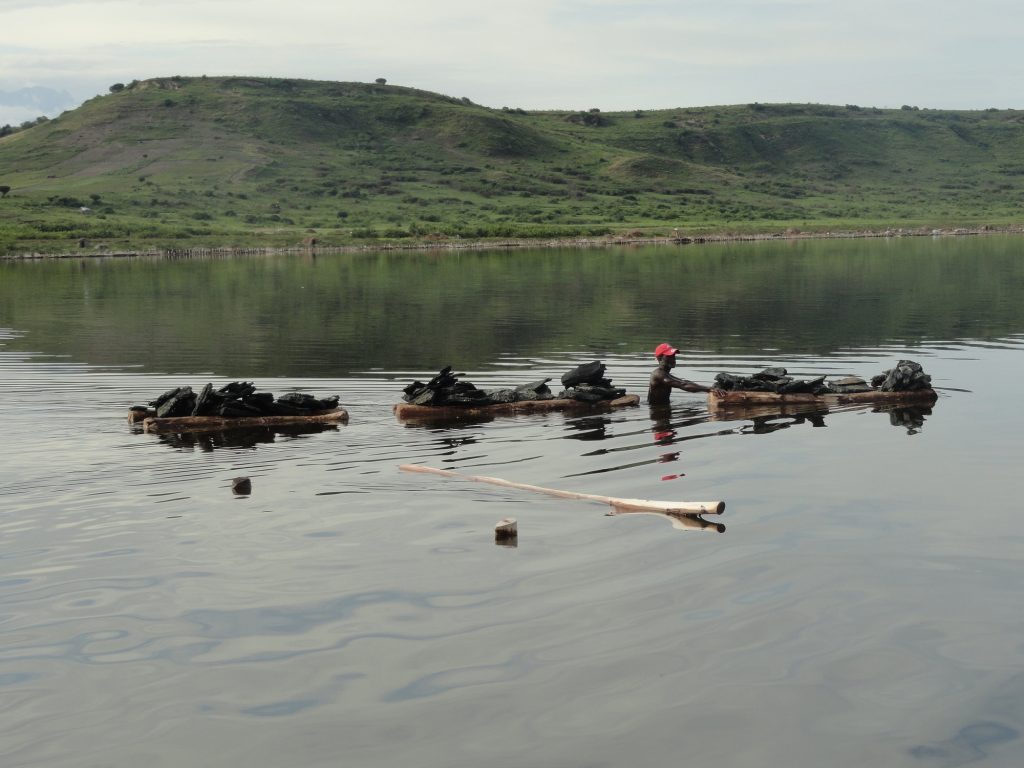
Amazingly, the transportation wooden pallets are built out of special wood that is as light as feather. Try and you will be surprised to lift a big log or whole trough with one finger. This wood enhances floating and quicker movement enabling the miners to use less energy to transport their products over this shallow lake. Each miner is able to carry tons of salt rock across the lake in one trip, using several wooden pallets. The special wood is collected within Queen Elizabeth national park under a community agreement with the park. this is one of the sustainable resource use agreements of this kind.
The experienced guides take you through the science of salt formation, how the people traditionally protect themselves from the salt chemicals during the mining exercise, and the social-economic impact of Lake Katwe salt in Uganda, Africa, and the world over the decades. You will also learn that Lake Katwe was one of the most treasured Africa’s resources in ancient years. It is believed that salt from Lake Katwe once influenced the powers of monarchies over Africa when it was carried by men to the different kingdoms of the continent.
On the dark side of salt mining in Katwe, you will realize that traditional salt mining at Lake Katwe is not a bed of roses. It is a painful story where the community of miners applies rudimentary and risky measures to address serious health issues.
At the end of the tour, some conclude that it is a trade of life and death, where people are compelled to participate in a risky venture to earn a living. Yes, it is one of the riskiest jobs on the continent or the world. During the tour, you will observe or learn from the guide and miners how people especially women have faced many life challenges that have led them to barrenness, disability, or long-term sickness and death.
A combination of the scorching hot climate and the salty waters aids excessive dehydration, also causing a health risk to both the village residents and miners. The scorching sun makes it impossible to use modern protective gear hence miners prefer to go to the lake naked. The impact of body exposure to salty water can be observed from the turned skin of some miners.
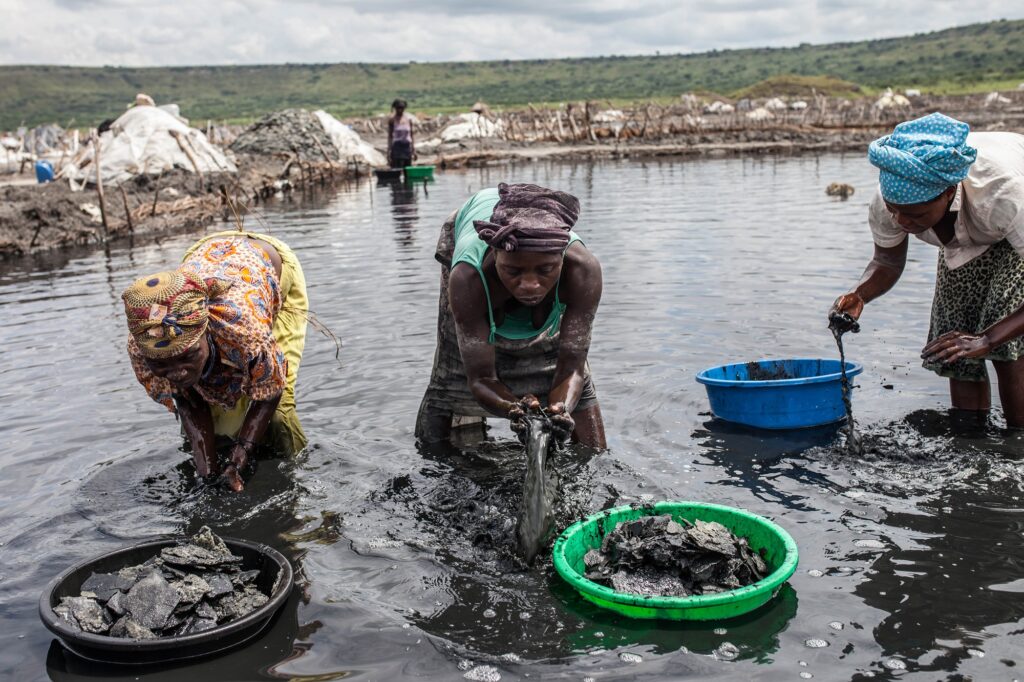
Chemicals in salt are very corrosive to the skin causing sores. This however doesn’t deter them from mining even when they have some of these challenges, as they need to put food on their family table. You will be inspired by the innovative way these communities have tried to address these life challenges enabling them to do this trade for decades of their life.
Please contact us for current information on how to travel or book your Katwe salt mining experience. We can also arrange other services including transportation, meals, and accommodation, or arranged tours that include a visit to Lake Katwe

